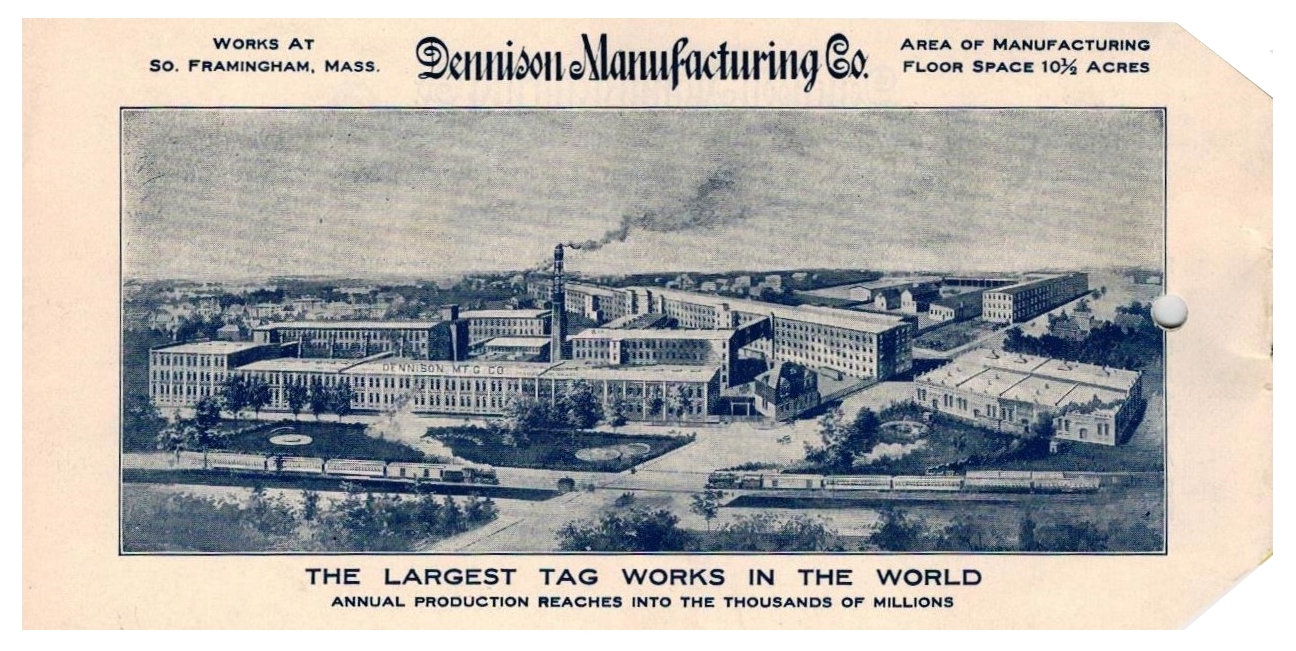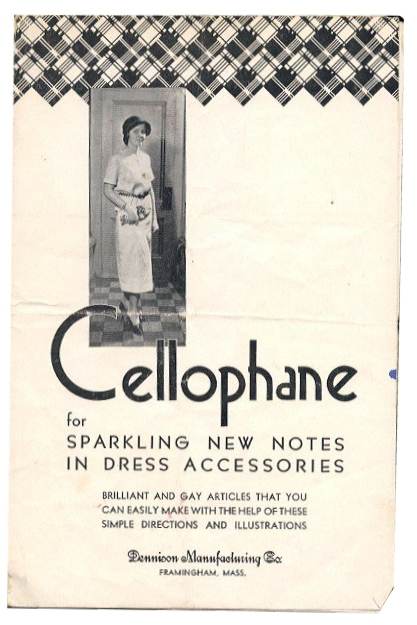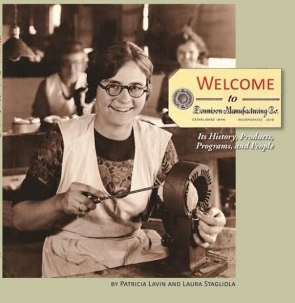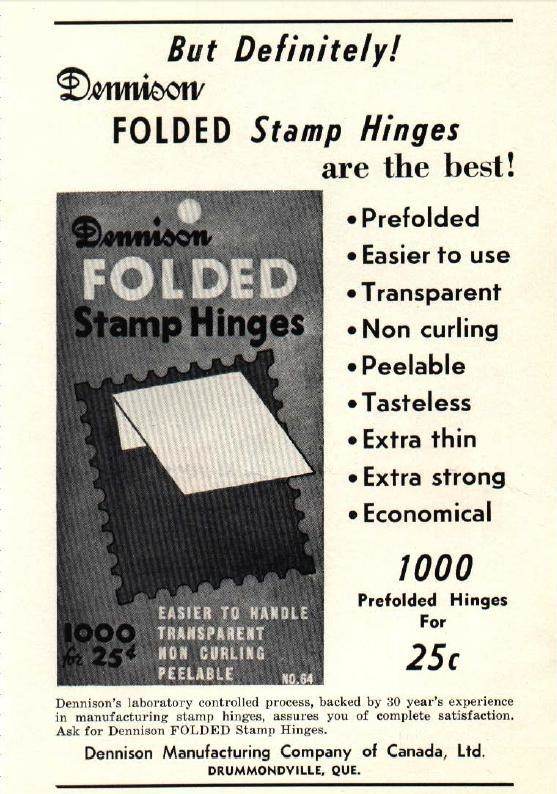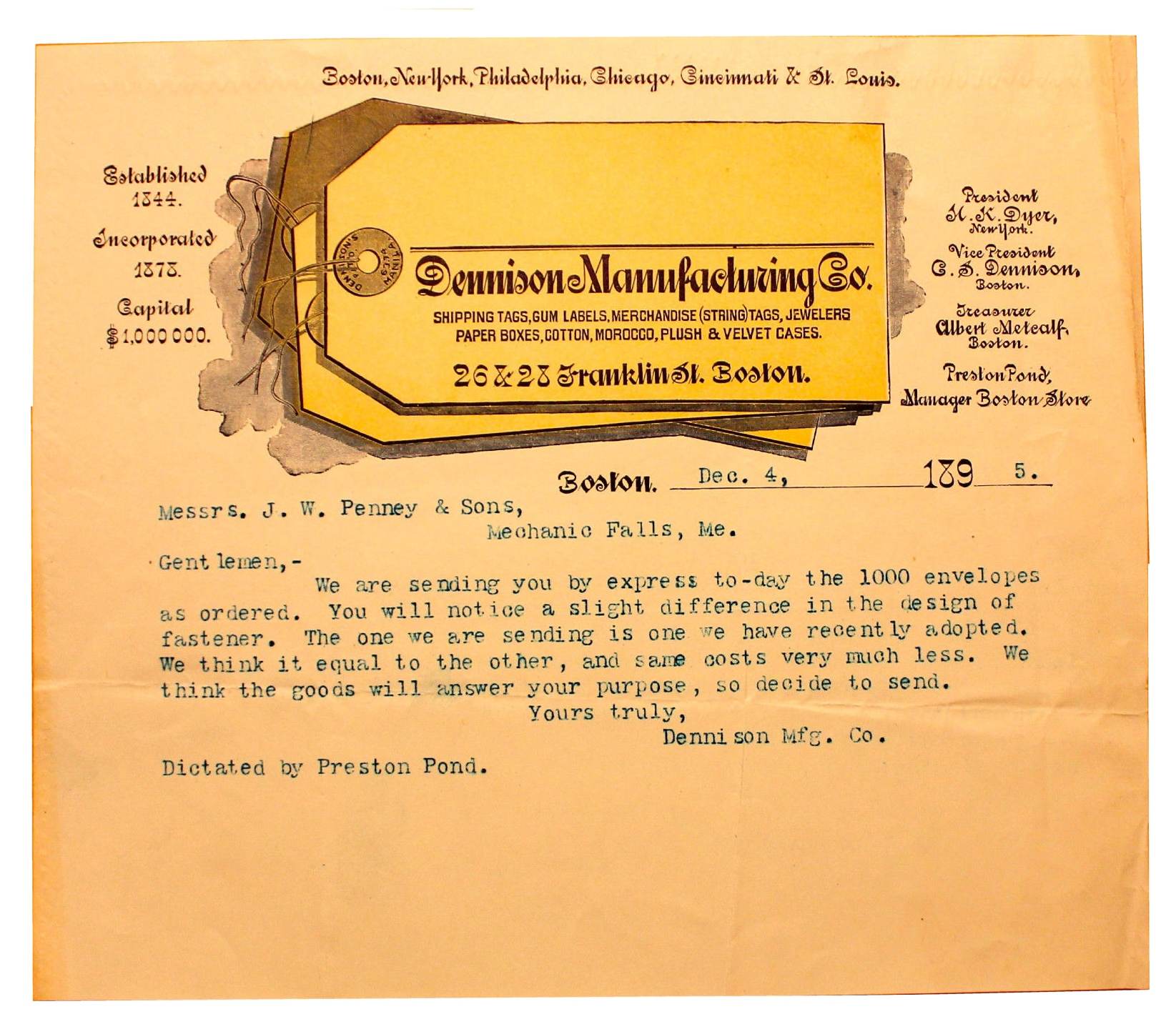Dennison Stamp Hinges
By Don Denman
Stamp hinges were first introduced around 1868; until that time hobbyists either glued or attached stamps using bits of stamp selvage. By the early 1900’s hinges came into wide use and were found in various shaped and types. Trying to date hinges is difficult since few manufacturers dated their product or packaging. One of the key factors in a good stamp hinge is being able to peel the hinge off the page and stamp without difficulty of damage. Another notable advancement was the ‘pre-folded’ hinge and by the 1930s both of these attributes were beginning to take hold.
The Dennison Manufacturing Company is the most widely recognized peelable hinge supplier. Dennison was founded by by Col. Andrew Dennison in 1844. The Brunswick, Maine company manufactured paper boxes. By the mid-1860s the company moved to Boston MA and had expanded to manufacturing other products such as labels, tissue paper, and other paper holiday and special occasion paper products. Around 1896 they also began offering tape and adhesive products such as the tape.
No one really knows exactly when Dennison began manufacturing stamp hinges. As a very small part of the company’s product offerings, it is not well documented. But it is believed that Dennison stamp hinges began showing up in the marketplace in the early 1930s. The initial packages were marked as #4 and these hinges were not pre-folded.
Dennison hinge packaging evolved over the years, the packages usually contains 1000 hinges and went from 20 cents, to 25 cents, to 29 cents. Here is a gallery of Dennison stamp hinge packaging.
In 1952, the family ownership of Dennison ended and by the mid-1950s, they switched over to pre-folded hinges. They also moved to a green colored hinge material and removed the rounded corners. This second generation was also marked more changes to their package design.
Dennison also produced hinges for the Canadian market in a facility in Bowman Ont. It also sold them under several other packaging styles such as these.
By the 1960s Dennison still manufacturing hinges in Framingham but production was halted in the early 1980s. In 1990 Avery International merged with Dennison to form new Avery-Dennison Company. The Avery-Dennison Company was ultimately purchased by the 3M Company. In 2013 the building at 7 Bishop Street in Farmington was sold by the Avery-Dennison Company. Many other manufacturers have attempted to produce a truly peelable stamp hinge but none have ever met the popularity of the original Dennison hinges. In 1995 researchers interviewed an ex-Dennison employee who said they were told to destroy files on the hinge-making process and that they had a “great loss when 38 years of my work at Dennison was gone forever. As I recall it was a good product but very difficult to make.” Some believe that the switch from natural glues to synthetic adhesives lead to poor quality hinges. Others have speculated that Dennison processed a texturing on the adhesive surface. This textured gum surface meant that less material would adhere the hinge to the stamp and this is what made them so peelable.
In the 1990s Mel and Virginia Goldberg of Subway Stamp Company purchased some of the original Dennison hinge making equipment. They started manufacturing these hinges under the name of G&K but these were not the same as the original Dennison hinges. Subway eventually stopped hinge production and there Is currently no commercial stamp hinge manufacturers left in the United States.
For those who might be interested, a book named “Dennison, its History, Products, Programs, and People“ covers much of Dennison’s history. “In the vividly illustrated book Welcome to Dennison, its History, Products, Programs, and People, authors Patricia Lavin and Laura Stagliola tell the Dennison story, from its beginnings in Maine when shoemaker Aaron Dennison first made cardboard jewelry boxes, to the death of his great grandson Henry S. in 1952. It is a story of remarkable growth and ingenuity
